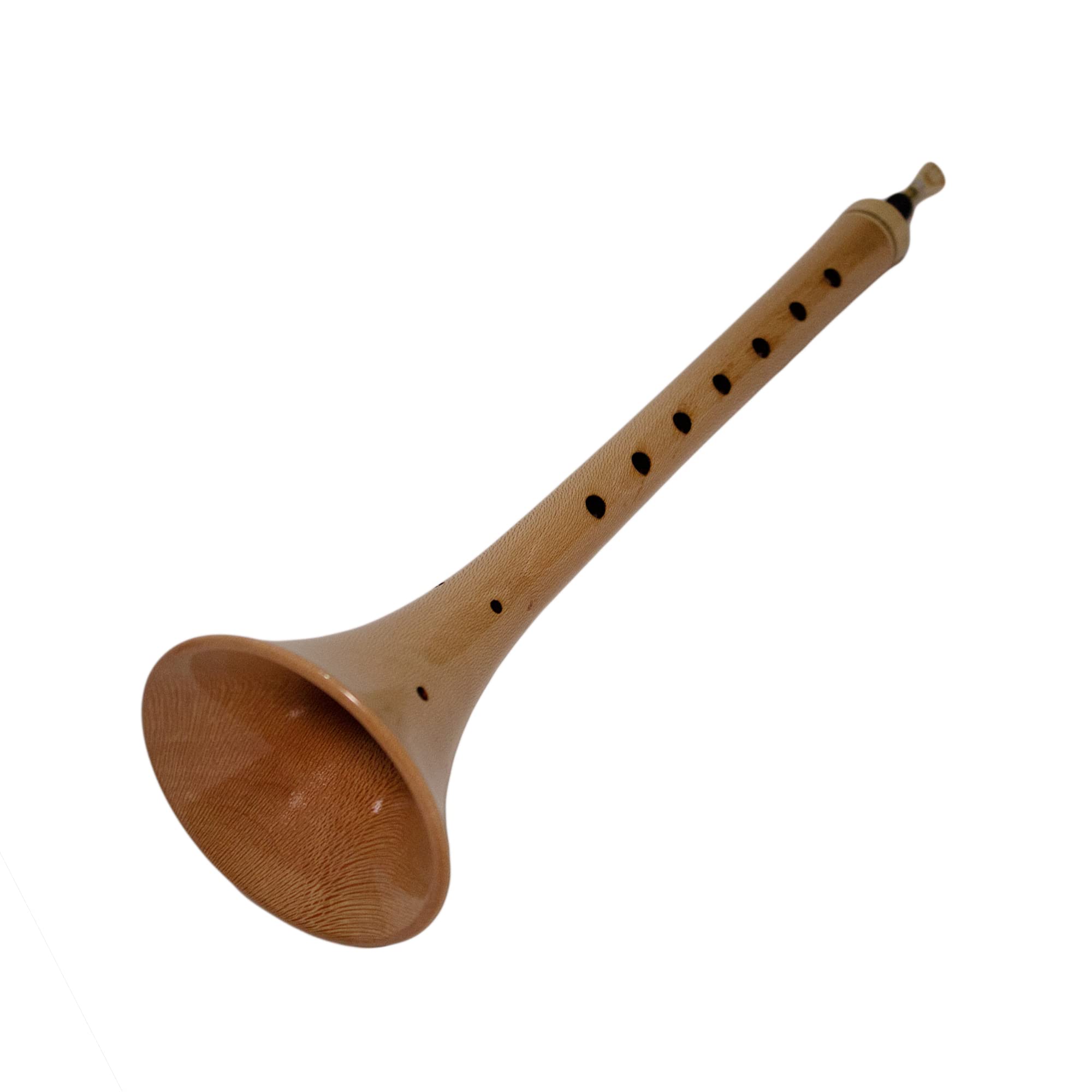Zurna
Woodwinds
Middle East
Between 1001 and 1900 AD
Video
The zurna is a traditional double-reed wind instrument widely recognized for its piercing, high-pitched sound. It has deep roots in the musical traditions of various cultures, particularly in Turkey and surrounding regions. It is characterized by its conical wooden body and is often used in festive and ceremonial contexts.
Description and Purpose
The zurna features a conical bore and is typically constructed from hardwoods such as plum or apricot. It consists of several parts, including the mouthpiece, body, and bell. The instrument usually has seven finger holes on the front and one thumb hole, allowing players to produce a range of notes. The zurna is primarily used in folk music and is an essential component of celebrations, weddings, and dances. Its loud and vibrant tone makes it ideal for outdoor performances, where it can be accompanied by drums like the davul to create a lively atmosphere.
History and Origin
The origins of the zurna can be traced back to Central Asia, with evidence suggesting its use in ancient cultures across the Middle East, including Persia and Anatolia. The instrument has been documented as far back as the 16th century, evolving from earlier double-reed instruments like the aulos used in ancient Greece. As the Ottoman Empire expanded, the zurna spread into the Balkans and Eastern Europe, where it adopted various regional names and forms. Today, it remains a significant part of Turkish folk music while also being present in Armenian, Kurdish, and Assyrian musical traditions.
Working Mechanism
The zurna produces sound through a double reed located at the mouthpiece. When air is blown into the mouthpiece, the reeds vibrate against each other, creating sound waves that travel through the instrument’s body. Players can manipulate pitch by covering or uncovering the finger holes along the body. This requires skillful breath control, often utilizing circular breathing techniques to maintain a continuous sound while playing.
Types of Zurna
There are several types of zurnas based on size and regional variations:
- Kaba Zurna: The largest variant, typically used in Bulgaria; it produces deep bass tones.
- Zurna (Standard): The most common form found in Turkey, often used in folk music.
- Short Zurna: A smaller version that produces higher pitches; this type can be made from bone or other materials.
- Regional Variants: Different cultures have their adaptations of the zurna, such as the sorna in Iran or the zurna in Macedonia.
Features
The zurna is distinguished by its robust construction and unique sound characteristics. Its conical bore design allows for a bright and penetrating timbre that can carry over long distances, making it suitable for outdoor performances. The instrument’s ability to blend well with percussion instruments enhances its role in traditional ensembles. Additionally, its portability allows musicians to perform at various events, from village festivals to formal ceremonies.
The zurna is a vital instrument within many cultural traditions, known for its loud and vibrant sound that adds energy to celebrations. It is rich history and diverse forms reflect its importance in both folk music and ceremonial contexts across different regions.
FAQ
What is the Zurna and its Historical Significance?
The Zurna is a traditional double-reed wind instrument widely used in Central Asia, the Middle East, and the Caucasus. It has ancient origins, believed to date back thousands of years, and is often associated with ceremonial and celebratory music. The Zurna played a significant role in Ottoman military bands and continues to be important in folk music traditions across various cultures, particularly in Turkey, Armenia, and Iran.
How is the Zurna Constructed?
The Zurna is typically made from wood or metal and features a conical bore with a flared bell. It has seven finger holes and one thumb hole that allow for a range of pitches. The instrument uses a large double reed, which is crucial for producing its loud and penetrating sound. Its design enables it to project sound effectively, making it suitable for outdoor performances.
What Role Does the Zurna Play in Modern Music?
In modern music, the Zurna remains an essential instrument in folk music ensembles and traditional celebrations. It is commonly played alongside percussion instruments like the davul during weddings, festivals, and public gatherings. The Zurna's distinctive sound continues to evoke cultural heritage and is celebrated for its ability to enhance festive atmospheres.
 Links
Links
References
Other Instrument
Categories


















